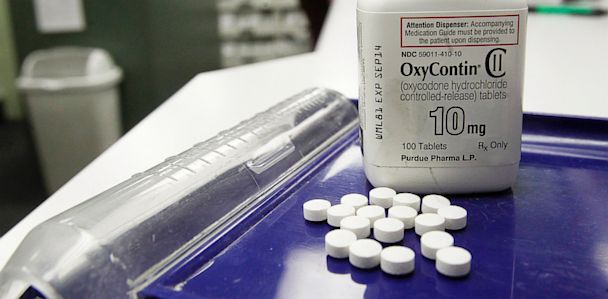More Women Overdosing on Painkillers, CDC Report Finds
The number of women overdosing on prescription painkillers such as Vicodin and OxyCotin has increased by more than 400 percent in the past decade, a new national survey on drug use and health from the Centers for Disease Control and Prevention has found.
About 18 women die every day from taking prescription painkillers, according to the survey. Since 2007, more women have died from overdosing on prescription painkillers than in motor vehicle accidents. And death rates from opioid abuse in women are more than four times higher than death by cocaine and heroin use combined.
Drug Overdoses at Music festival Kill 1, Hospitalize Dozens
In 2010, nearly a million women visited emergency rooms for drug misuse or abuse, and 6,600 of them died. Prescription drug abuse by women doubled between 2004 and 2010.
"I find these numbers extremely troubling, though not especially surprising," said Susan Foster, the vice president and director of policy research and analysis for CASA Columbia, a New York think tank that studies substance abuse and its effect on public policy.
Since women are smaller than men, they feel the impact of prescription drugs on smaller doses, said Foster
They also become addicted to prescription drugs more quickly than men and are more likely to use prescription drugs in combination with other drugs, such as alcohol, according to the report.
House Bill Aims to Curb Prescription Drug Abuse
Foster also said that drug marketing is frequently aimed squarely at women. This could explain why women are 50 percent more likely to walk out of a doctor's office with a prescription for a controlled substance in hand, even if they've been given the same diagnosis as a man, she said.
But overdosing on painkillers rose 265 percent in men in the decade covered by the survey.
The report also notes that the rise in deaths closely mirrors increased prescribing of these drugs by doctors. But nearly one-third of men and women who used these drugs started by taking them for nonmedical reasons. More than 70 percent of prescription drug abusers first got them from friends or relatives. Only 5 percent scored their prescriptions from drug dealers or bought them on the Internet.
To bring the problem under control, the CDC' recommends better tracking of prescription drugs and more health care education for both providers and patients.

Eighteen women a day die from prescription pill overdose. Credit: Toby Talbot/AP Photo.
While Foster agreed with this approach, she believes a broader approach is needed.
"We live in a pill for every ill society, and prescription drugs are just one aspect of the overall addiction problem we have in this country," Foster said. "If we only focus on one type of drug at a time we are playing a costly game of whack-a-mole. We pound down on one type of drug only to see the problem emerge in a diff form."